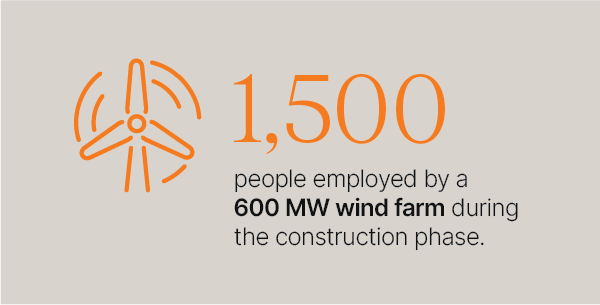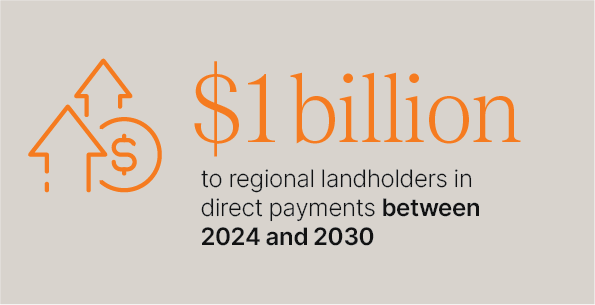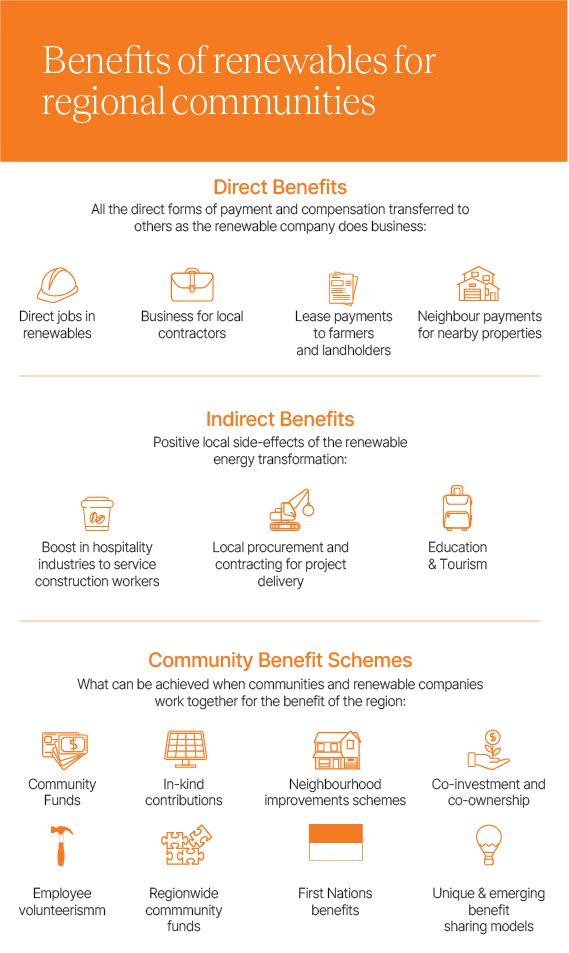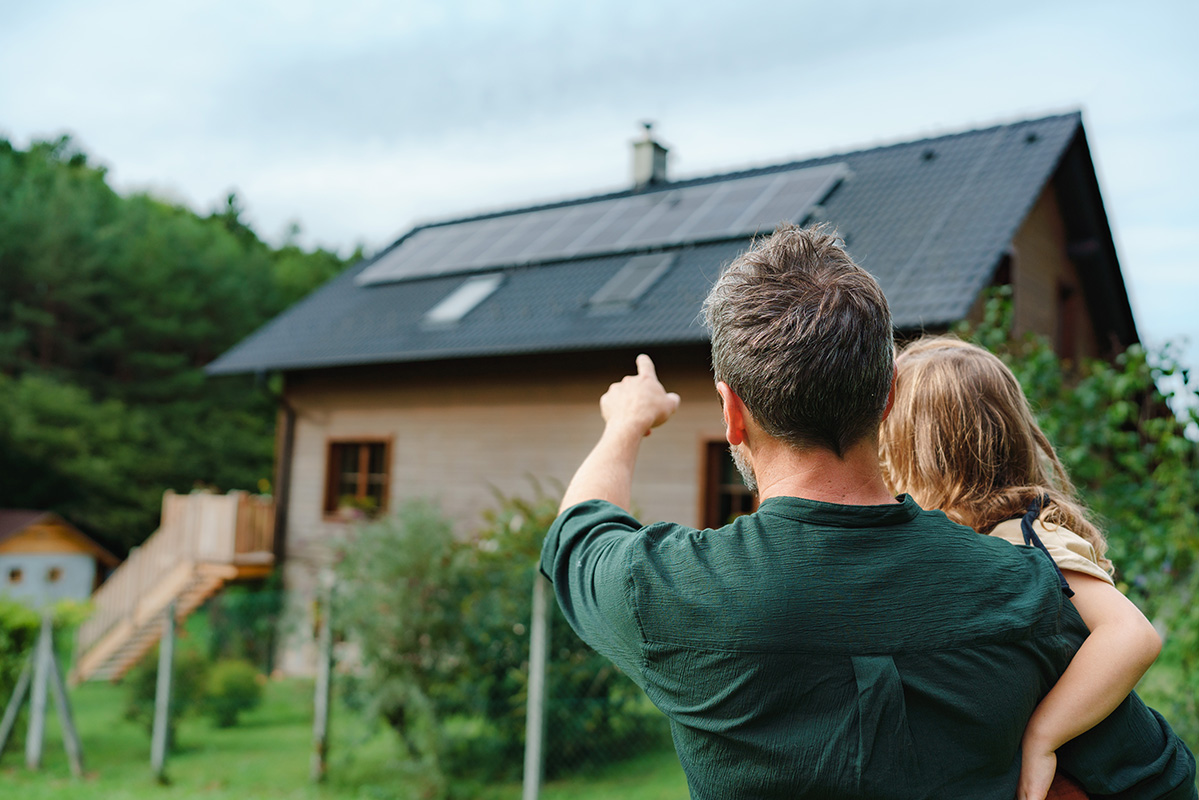
Clean energy projects create ongoing employment, boost local business, provide community benefit funds and improve local infrastructure.
How many jobs are expected to be created in the clean energy sector?
There are an estimated 30,000 people working in clean energy in Australia. If all the clean energy projects in the pipeline to 2030 go ahead, this will create an additional 450,000 jobs during construction. That’s just the beginning; we’ll need to continue building clean energy infrastructure to 2050 and beyond as we transition to clean energy. This presents substantial economic benefits and job opportunities for communities hosting clean energy projects.
What is benefit sharing?
Benefit sharing involves sharing the financial and non-financial benefits of clean energy projects with local communities, particularly those closest to the development. Benefit sharing enables host communities to reap the rewards of a project's success. Analysis shows that large-scale wind and solar projects across the National Electricity Market are expected to deliver between $9.7 - 11.7 billion in landholder payments and contributions to regional communities and councils over the coming decades. This includes $7.7 billion - 9.7 billion in direct payments to landholders and $1.9 billion in contributions to regional communities and councils, between 2024 and 2050. In 2023, clean energy projects in Australia provided more than $10 million in local benefit funds (1).
What are the advantages of benefit-sharing schemes?
Benefit-sharing schemes are best designed in collaboration with the community and can include electricity bill subsidies, equity schemes where a project is part-owned by residents, energy upgrades including rooftop solar installation and home energy efficiency upgrades, school funding, funding for community initiatives, improving community infrastructure or buildings, funding local sporting groups, or scholarship and training opportunities for young people.
Do clean energy projects provide economic benefits for the community?
Local businesses across the supply chain from building supplies, transport and manufacturing to cleaning and catering service providers can benefit from clean energy projects. Hospitality and accommodation providers will see increased traffic as workers spend earnings in local cafes and pubs. Local infrastructure including roads, bridges and telecommunications infrastructure may also be upgraded to support project delivery.
(1) Billions in the bush: Renewable energy for regional prosperity report.
Benefit sharing schemes typically fund local initiatives, neighbourhood groups, local sporting teams or provide training and scholarship opportunities.


Farmers can earn $38,500 to $45,500 per year from hosting a typical 7 MW turbine and up to $1,250 per hectare from solar. For comparison, a beef farmer can expect returns of $1,500 per hectare per year in a good year.
Will local councils receive benefits from clean energy projects?
Local councils may receive direct financial benefits from clean energy projects, further contributing to community development. Payments to councils can come in various forms, including rates, taxes and other levies associated with the projects. Councils can channel these funds into community projects, public services and infrastructure upgrades, ensuring the broader community reaps the rewards of hosting renewable energy projects.
Do local landholders receive any payments?
Renewable energy projects provide payments to landholders who host project infrastructure, such as wind turbines, solar panels or transmission lines. These payments could result in landholders being paid millions of dollars over the life of a project. It’s common for developers to upgrade fencing and access roads on the host’s property and in most cases, the land projects are located on remains productive and grazing or agriculture can continue. It’s also now becoming more common for projects to enter into neighbourhood agreements, providing benefits to landholders near the project.
Are there ongoing employment opportunities?
Most clean energy jobs are created during the construction phase, which typically lasts 1-2 years. Workers will develop valuable skills that will take them to the next clean energy project. Once built, projects require a skilled workforce to run and maintain. These are ongoing, well-paying jobs over its 30-year operating life.
How do renewable energy projects contribute to First Nations communities?
Renewable energy projects contribute to First Nations communities by providing avenues for employment, skill development, local procurement and community involvement. The shift towards clean energy represents an opportunity for sustainable, inclusive development that respects and incorporates the values and aspirations of First Nations communities.
Are there upskilling opportunities for local residents?
Clean energy projects offer opportunities for upskilling local workers, especially during the construction phase. Local workers have an opportunity to gain transferable skills that extend beyond the immediate project, making them versatile and employable in other industries and especially in constructing new infrastructure.
What are the lasting positive changes of clean energy projects on communities?
Clean energy projects can play a pivotal role in fostering positive change within host communities. From creating employment opportunities and upskilling residents to benefit sharing, infrastructure improvements and reducing the worst impacts of climate change, these projects contribute to holistic and sustainable community development. The positive changes brought about by renewable energy projects resonate across economic, social and environmental dimensions.

